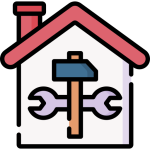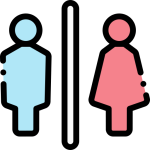Modifying Your Home
Home modification can make a big difference for you and your loved one after they have suffered a stroke. Even a few minor changes can reduce frustration, increase independence, mitigate the risk of falls, and ease their transition back into everyday life.
When thinking about which changes to make around your home, consider your loved one’s activities of daily living (ADLs). These include activities like eating, bathing, grooming, bathroom use, getting out of bed, and so forth. Consider what will make these activities easier for him or her. If you are unsure of where to start, ask your loved one’s occupational and/or physical therapists for recommendations.
Home Modifications for Stroke Survivors
- Doorknob Extenders - Levers that attach to doorknobs without handles and allow a person to open a door by pressing down on the lever
- Tub Transfer Bench – Make transferring into and out of shower easier and safer
- Rails/Grab-bars – Can be installed around the house to aid in balance and provide support when moving around
- Shower hoses – Allow your loved one to bathe more independently if he or she has limited movement and need to sit
- Non-slip bathmats – Help stabilize and prevent falls in slippery tubs
- Night Lights – Illuminate hallways and pathways, especially to the bathroom at night
- Rug Grippers - Non-slip adhesive pads that prevent rugs from slipping out of place
- Raised Toilet Seat or Commode – Allow stroke survivors who experience leg weakness or limited mobility to use the toilet more safely and independently
- Soap Dispensers – Easier for stroke survivors with weakness in one arm (hemiparesis) to used compared to bar soap and squeeze tubes
- Ramps – Both portable and permanent ramps can help your loved one get around the home if he or she uses a wheelchair
- Open Shelves - Allow stroke survivors to see what’s in cabinets without having to open them, and are especially helpful if your loved one has memory problems
- Closet Racks or Rails – Make it easier to store and access clothes compared to when clothes are tucked away in drawers
- Cord Covers – Install cord covers or tape cords down to prevent tripping hazards
- Adaptive Cooking Equipment – Items like nonslip placemats, cutting boards, pot stabilizers, plate guards, rocker knives, and adaptive cutlery will make it easier for your loved one to eat and prepare simple meals
- Remove Locks – By removing locks from doors within the house you will ensure that your loved one will not get locked in a room
- Clear Walkways – By keeping floor and walkways clear of clutter and obstacles, you’ll help prevent falls and make your loved one’s movement around the house easier
Click on the tiles below for some tips for caregivers who care for stroke and aphasia survivors.
Medications

Modifying Your Home

Managing Incontinence

Nutrition and
Meal Plans

Dealing With Post-Stroke Depression

Caring For Someone Who Can't Speak After A Stroke

